How Your Plants Are Shipped
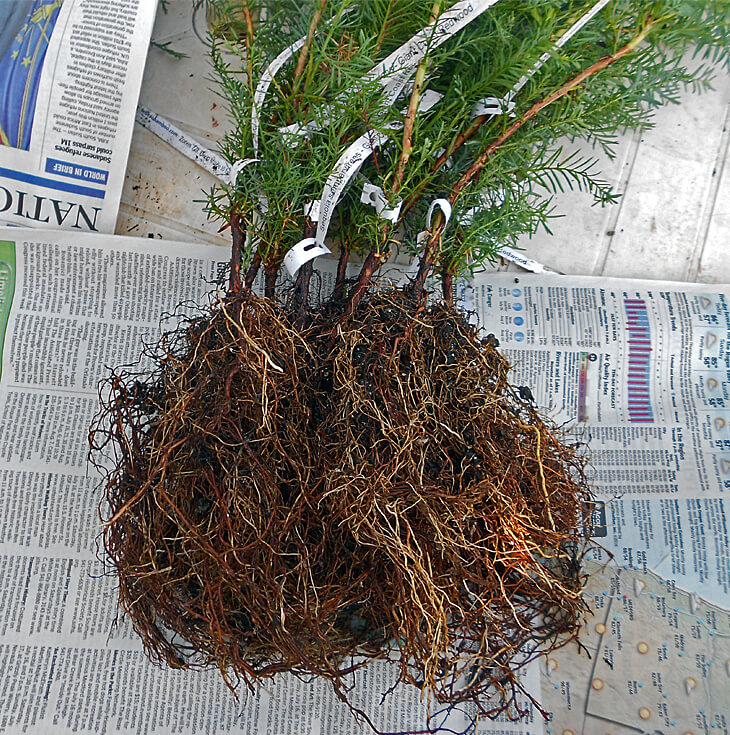
Your plants will be shipped either in their container or bare root depending on the type of plant. Generally, bamboo plants are shipped in their container because they don't like root disturbance and bare root shipping would cause a lot of damage. Most other plants do just fine with bare root shipping because their roots are more flexible and less likely to break during transit. Small sized plants, usually in one and two gallon containers, can be shipped during the active growing season while larger plants are delayed until they are dormant in the fall and are shipped until spring.
Plants Shipped In Their Container
Plants that are shipped in their containers have their container wrapped in plastic to keep the soil from falling away and are then strapped to the bottom of the box. This prevents the plants from moving around even if the boxes are dropped or turned upside down.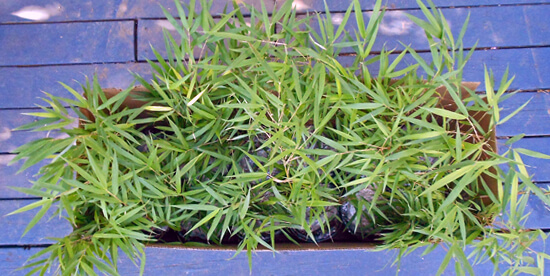
One gallon bamboo plants boxed, strapped, and ready to be sealed. Our most common boxes fit 8, 12, and 17 plants tight and snug. Smaller boxes also fit two plants in each.
Plants Shipped Bare Root and Washed Root
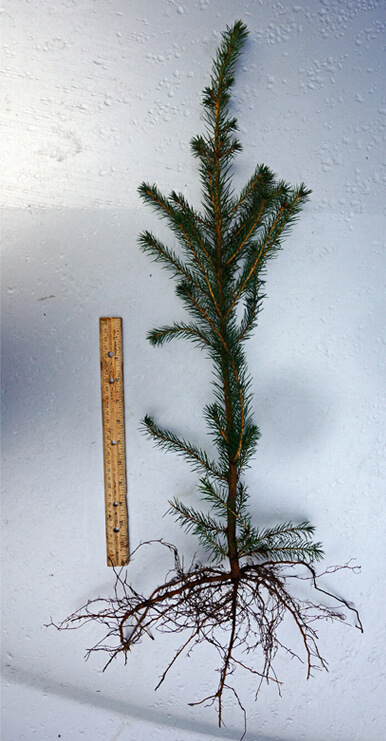
A bare root Sitka Spruce
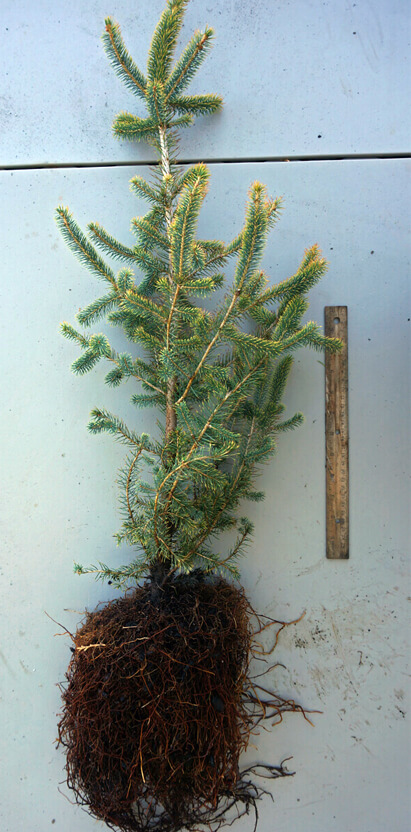
A 2 gallon Sitka Spruce with all the soil washed away
Washed root plants are grown in containers like one or two gallon pots in a standard nursery setting and can ship much earlier in the fall because we don't have to wait for deep winter dormancy before handling the plants. For shipping the plants are removed from their containers and the soil is gently washed off of the roots, preserving most of the small feeder roots. We make minor root pruning cuts to elimate clumps of circling roots from some plants but typically don't remove more than about 5-10% of the fine roots, compared to bare root plants which typically lose around 60-70% of the fine feeder roots. Washed root plants are much quicker to establish and are suitable for planting directly in windy locations but because of the higher growing costs and shipping weight will be more expensive than field grown bare root plants. Some plant species that are especially prone to root circling are not grown in containers but only in the field.
For most plant species we choose the growing method that has the highest success rate for that plant's root structure but some plants can be grown just as well either way so both forms can be listed for sale at once. Under the "availability" section for each plant variety any plants listed by container size (such as 1 gallon, 2 gallon, etc.) are washed root plants while plants listed by height (such as 20-30 inches tall) or any listing saying "field grown" are bare root plants. Woody and perennial plants are usually shipped by removing the plant from its container and washing the soil away. They are then bundled together and wrapped in wet paper and plastic to keep the roots moist but the tops dry to prevent rot.
Plants that grow from tubers, rhizomes, and bulbs like Dahlias, Grasses, and Peonies are often pruned back and sent padded in a bag full of sawdust. Typically these plants are available only for dormant shipping in late fall, winter, or early spring but a few species are available for summer shipping as well.
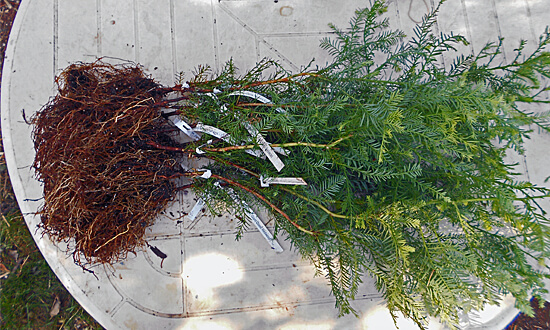
After the roots are washed of soil, the bundles look like this. Pictured are 10 Giant Coast Redwood in the 1 gallon size. Late in the season, these plants are often 3 feet tall! In this picture, the roots are 8 inches long.
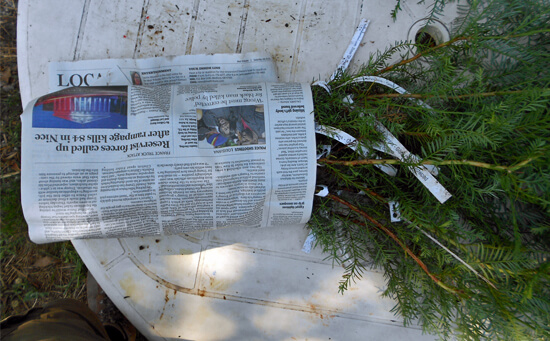
The bundle of plants is wrapped in paper to pad the roots from damage and keep them moist. For large plants, paper shreds are added to fill in gaps in the larger root structure.
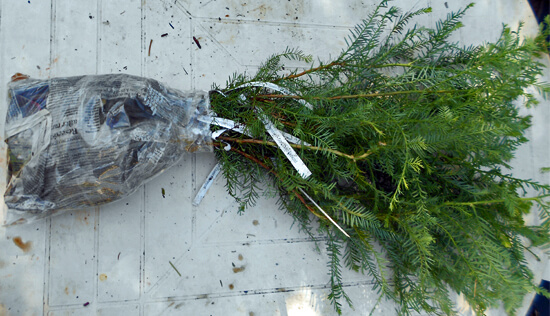
The bundles are soaked in water and then bagged. The top of the bag is taped shut and the tops of the plant are left dry.

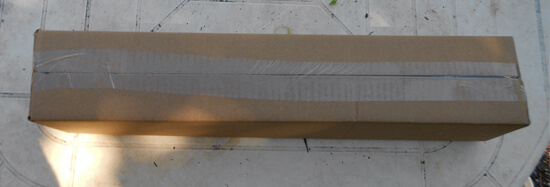
Your plants will be placed into tight fitting boxes to prevent the plants from shifting around during transit. They will also be secured to the bottom of the box with a piece of tape. Then they are ready to go!
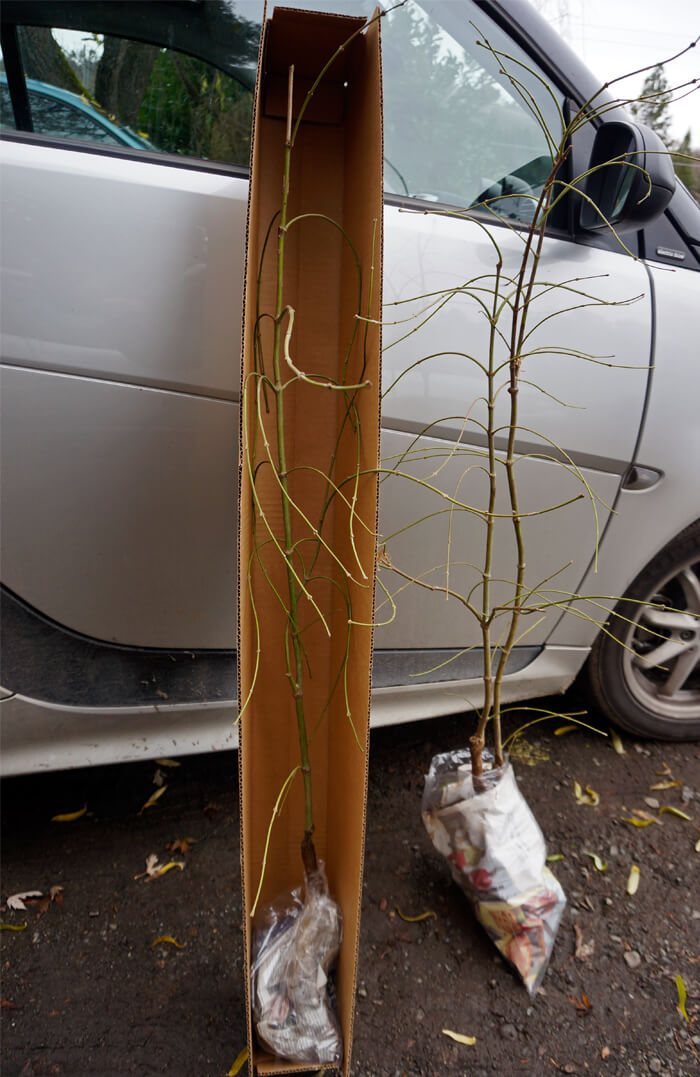
Tall plants like this Weeping Japanese Maple are bundled and shipped in tall boxes. Japanese Maples need to be shipped when they are dormant, from late October to March. The root ball will be strapped to the bottom to prevent the plants from shifting and supports will be added to keep the box from bending.
Pruning
We prune both the tops and the roots of our plants at least once per year while they are growing in our nursery to ensure they develop a strong, dense form. Regular annual pruning goes a long way to ensure a healthy branching structure and this is often a missed step in many nurseries. Pruning a plant back hard after it has been neglected pruning-wise often results in an irregular branch habit or multiple leaders. However, with annual pruning this is not the case and so it is important to start pruning even in the first year of growth. We also prune the roots of our plants every winter which causes them to produce a much more branched structure and helps to elimate tangled masses that hinder future development. Plants that have been root pruned establish themselves much more quickly than root bound plants. Generally, hardwood plants will be pruned in the winter and conifers will be pruned in the summer. Pruning conifers is a little bit trickier because it must be done while the new candles are still young, otherwise it can take an extra year to form a new upright leader bud which slows the next year's growth rate down.Pruning For Shipping
Before shipping plants we prune the tops and roots one last time. Conifers will usually have very little top pruning except to balance long branches. Shrubs are usually pruned to around 1-2 feet tall to encourage low branch development and small to medium sized trees are usually pruned to around 36-40 inches. Pruning trees at this height encourages dominant branches to begin forming around 3 feet from the ground which typically looks the best in most situations. However, if you want a tree to have branching start higher (some city codes require trees to not branch below 4 feet) we have longer boxes available. To request taller trees please contact us at least three days before your ship date. Depending on your location and the shipping routes there may be a fee for oversize package handling (usually about $15 for a 60" box).
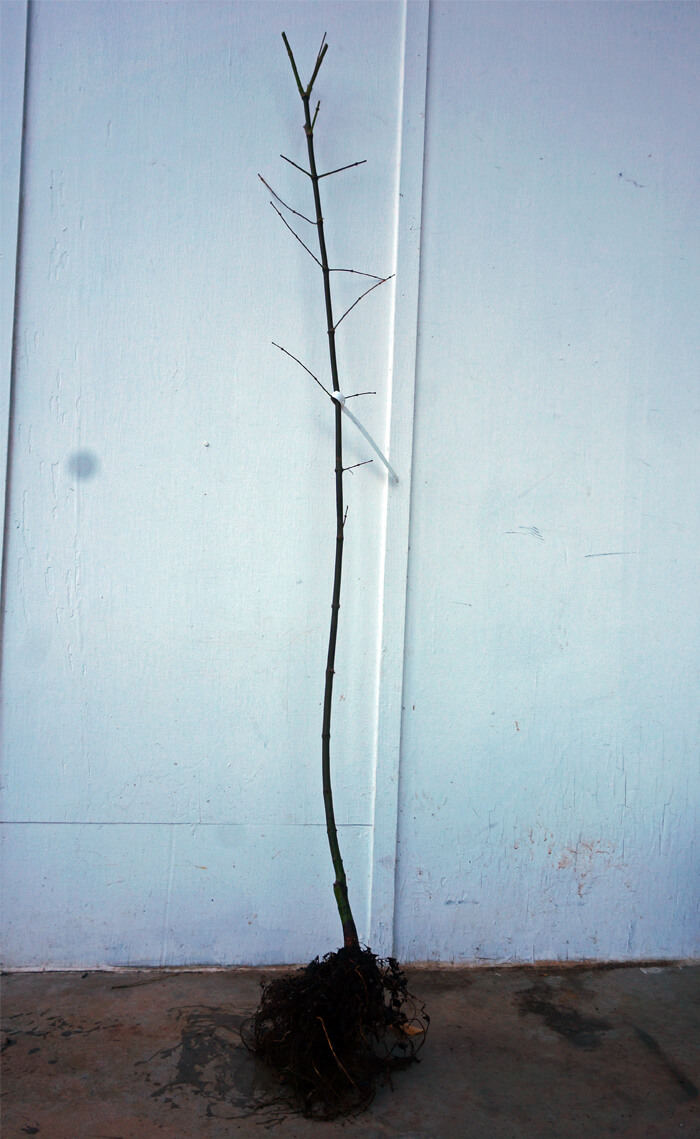 Tall trees (Oaks, Ginkgo, large Maples, etc.) are pruned to 40" to encourage crown development from about 36" and up 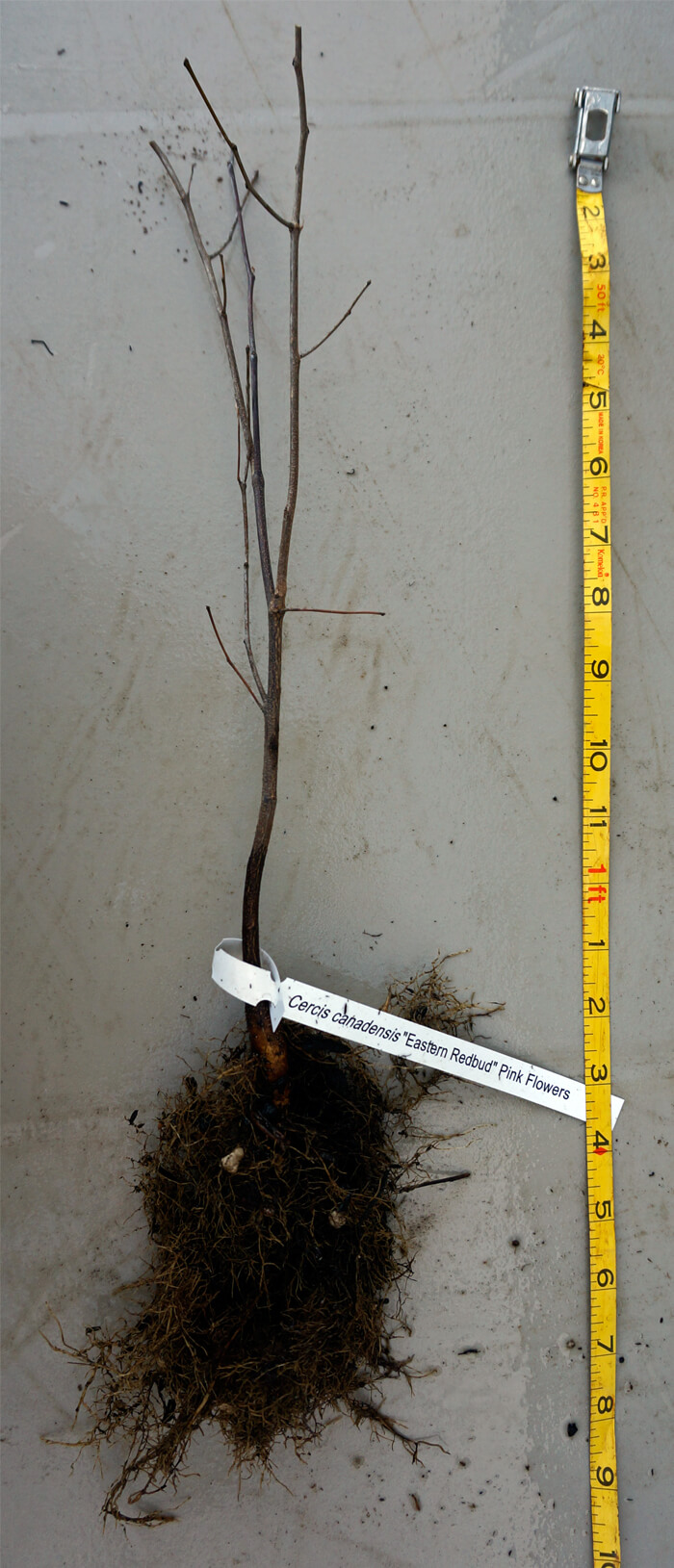 Small and medium trees (short Maples, Redbuds, Stewartia, etc.) are pruned 10-20" above the prune line from last year 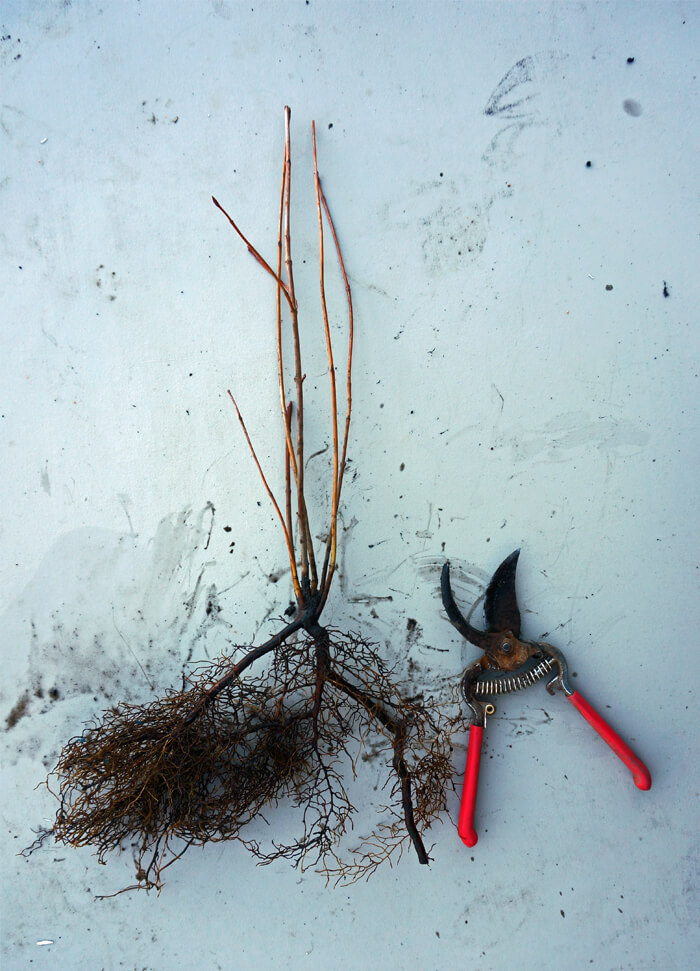 Shrubs (Weigela, Hydrangea, Viburnum, etc.) are pruned to 18" tall and root pruned one last time |
Can You Really Ship Washed Root Plants In Summer?
People ask us this question a lot and yes, most plant varieties do just fine with washed roots during their growing season. This comes back to the big question of "What Is The Difference Between Planting and Transplanting?" Transplanting means digging up a plant and moving it to a new location, which cuts and damages a lot of roots. Planting means moving a plant from a container into a larger container or into the ground. Planting is fine all year long because you are not shocking the plant with severe root damage, but transplanting shocks the plants so should only be done when the plant is dormant.When we wash the soil from small plants there is very little root damage so the plants are not shocked and will continue to grow like they were before. Therefore, small plants of most varieties can be shipped throughout the year. Larger plants have woodier and stiffer roots that are less flexible and more likely to sustain damage during transport so we like to ship larger plants when they are dormant. If roots are damaged while a plant is dormant it will have time to heal before the leaves emerge and start using a lot of water.

